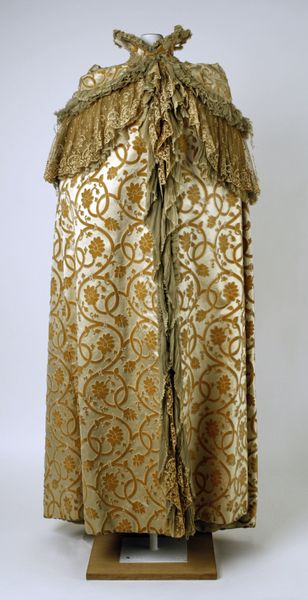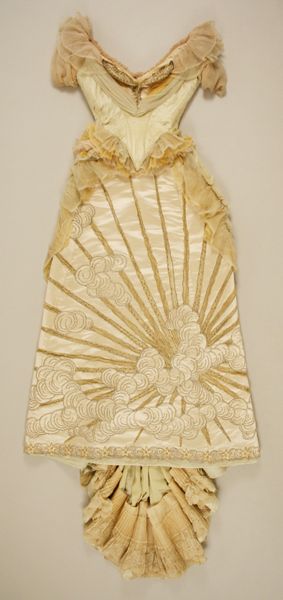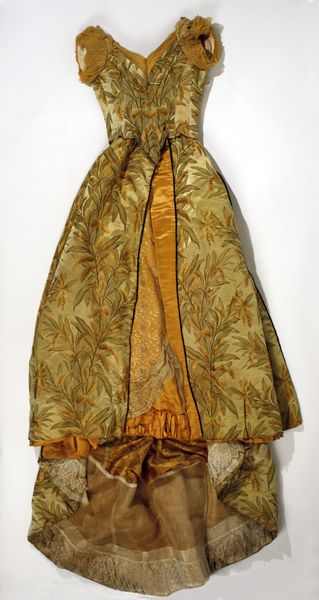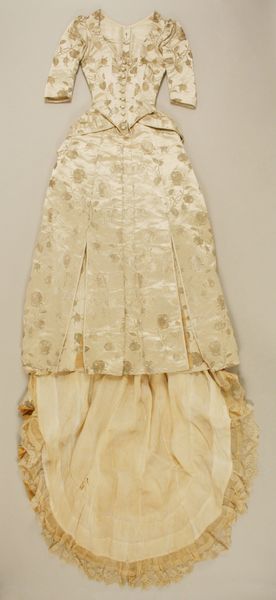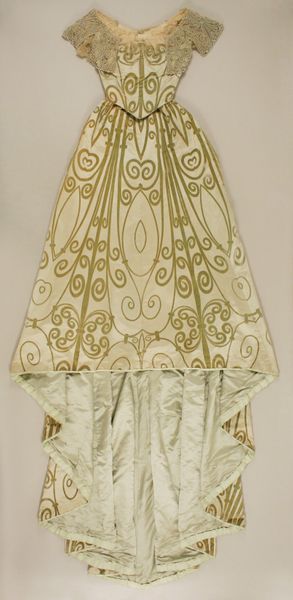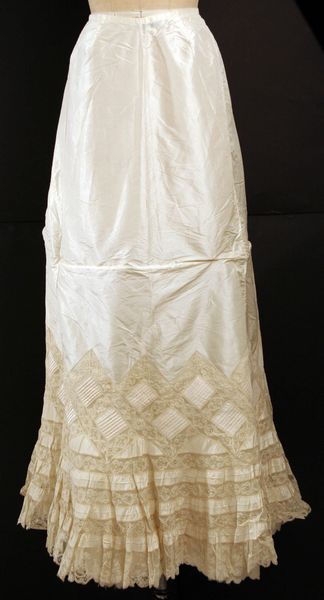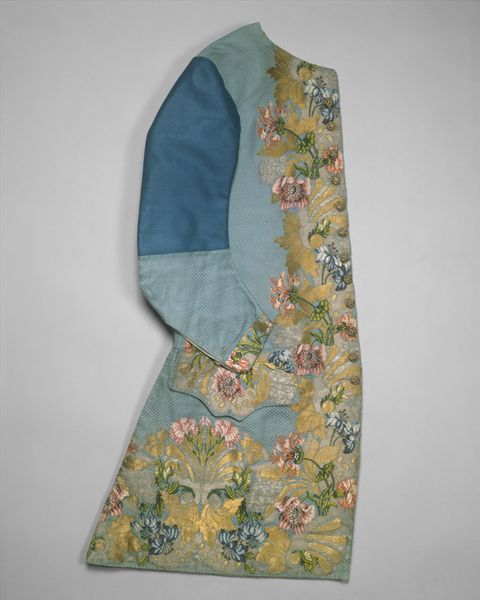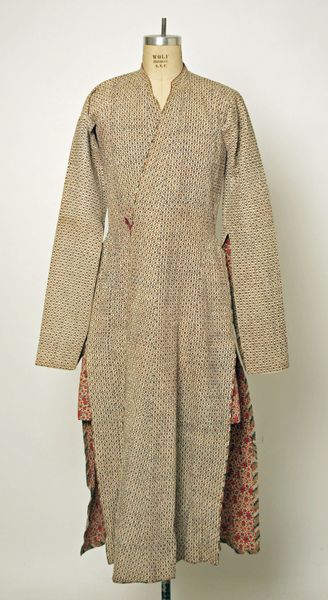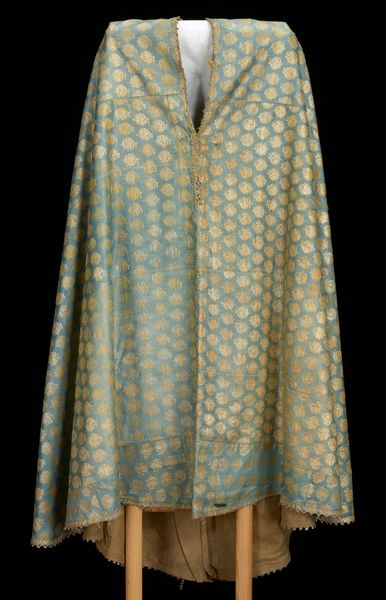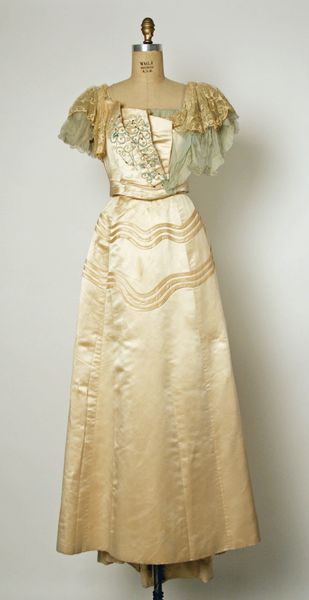
Copyright: Public Domain
This evening dress was created by Emile Pingat. It is currently located in the Metropolitan Museum of Art. Note the floral motifs adorning the dress. Flowers, throughout art history, represent not merely nature’s beauty but also complex emotions. Consider Botticelli’s “Primavera,” where blossoms symbolize fertility and renewal, deeply rooted in classical mythology. Here, these repeating floral patterns evoke similar notions of femininity and grace. Yet, the dress is more than mere adornment; it is a statement. The fabric's sheen and tailored form are designed to catch light and attention, transforming the wearer into a spectacle of beauty. Much like the Renaissance portraits, these garments reflect the aspirations and social posturing of their wearers. Thus, this dress becomes a canvas where personal identity intersects with broader cultural narratives, reminding us that fashion, like art, carries deep cultural and psychological significance, echoing through time and perception.
Comments
No comments
Be the first to comment and join the conversation on the ultimate creative platform.
